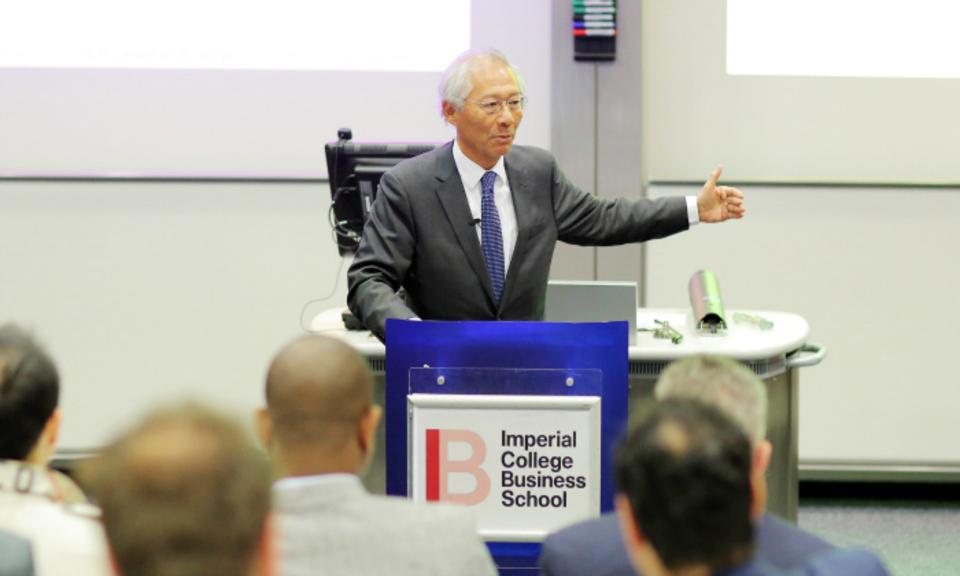
Written by
Published
Category
Key topics
Professor George Yip, Associate Dean of Executive MBA at Imperial Business School, investigates the recent surge of R&D centres in China
Research and development (R&D) is booming in China. In the past 15 years the number of foreign-run R&D centres across the country has increased from 200 to over 1,500. What is perhaps more interesting than the sheer numbers, though, is the type of R&D happening there. At the start of the millennium, Chinese firms used R&D to support low-cost manufacturing. Some moved on to R&D aimed at developing products to sell into the Chinese market. Now things are changing again, and we are seeing an explosion in the third phase: knowledge-driven R&D, which can be applied not just in the Chinese market, but globally.
To understand this trend more fully, I and two colleagues – Dominique Jolly, then a Professor at SKEMA Business School in France and now at Webster University in Geneva; and Bruce McKern, then a Visiting Professor at China Europe International Business School (CEIBS) and now at the University of Technology Sydney Business School – asked 50 R&D centres run by multinational corporations in several industries what sort of operations they are carrying out in China. Of our sample – which we believe is representative of activity in the country in general – 18 per cent were focused on cost savings, or “cost-driven” R&D, while 54 per cent were engaged in “market-driven” R&D, meaning that they are trying to develop products to sell in China. The remaining 28 per cent said that they were mainly focused on knowledge-driven R&D – fundamental research that can be exported all over the world. We estimate that the number of R&D centres will increase by 20 per cent by 2018, and that more will be knowledge-based.
So, why is this happening? In short, China is evolving from an imitator to an innovator and the style of innovation in China lends itself to knowledge-based R&D. Rather than looking for blockbuster products like the iPhone, Chinese innovation tends to be about making incremental improvements to existing products. It is about moving quickly, trial and error, and pragmatism.
China is evolving from an imitator to an innovator and the style of innovation in China lends itself to knowledge-based R&D
This style is, in turn, driven by the nature of the workforce. China has large numbers of scientists and engineers, who are cheap by Western standards, and an abundance of manufacturing experience. Combined, these factors produce fast improvements in components and engineered products. For example, Chinese firms have had a lot of success in improving photovoltaic panels. The next area of rapid improvement will probably be aerial drones, followed by other high-tech manufacturing and engineering-based products.
Another area in which China excels is pharmaceutical research. Subjects are paid relatively little, which means that trials cost less. China also lends itself to research for technological products, such as driverless cars, or anything else where large amounts of data have to be collected; because there are so many people, information can be collected more efficiently there than elsewhere.
For all these reasons, we are certain that Western firms will increasingly start transitioning to knowledge-based R&D in China. However, there are several barriers. One is location. While cost-driven and market-driven R&D is limited to the place of manufacturing, often in the country’s interior, knowledge-based R&D flourishes near universities and public research institutes, which tend to be located in the coastal regions. So, manufacturing-based R&D firms that are pursuing knowledge-based R&D may have to re-locate staff.
The second issue is personnel. Finding people with the right skills and experience to carry out knowledge-based R&D can be difficult. Chinese citizens can be constrained by the hukou system, which limits where people can work. To get around this, firms are increasingly hiring ethnic Chinese people who were educated and employed overseas. Firms pay them a Western-sized salary, then give them a larger pyramid of locally-trained engineers than they would have in the West. This allows them to achieve more in a shorter period of time. However, holding onto people can be a problem. It goes without saying that salaries are high, so the right people tend to demand inspired leadership, challenging work and overseas assignments. Firms that want to keep them have to meet these expectations.
Rather than looking for blockbuster products like the iPhone, Chinese innovation tends to be about making incremental improvements to existing products. It is about moving quickly, trial and error, and pragmatism
A third issue for companies looking into knowledge-based R&D in China is finding the right academic and business partners. It’s important to build relationships with university researchers and government research institutes by working on joint projects – preferably ones that fit national or local government priorities. Newcomers have to make sustained efforts to visit key research centres across the country and build contacts quickly in order to become insiders.
Finally, firms need to consider intellectual property protection in China. This is a legitimate concern, although the system is becoming more robust. Today, more Chinese firms than foreign ones sue in China for IP infringement. But companies still need to have clear internal policies for employee IP security at their R&D centres. To protect themselves, firms often break R&D projects into components – with one part of a project handled in China, and another in the West. Still, patents – including IP produced outside China – must be registered in China, both for local protection and to foster a positive relationship with the authorities.
The barriers are therefore real but surmountable – and the gains of moving high-level R&D to China are enormous. Getting a foothold in this new innovation ecosystem is likely to become a necessity for global businesses.


